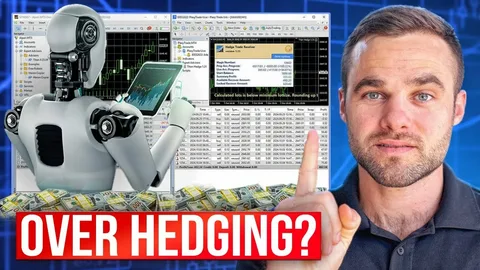If you’ve been trading futures with a prop firm for any length of time, you’ve likely figured out the market doesn’t exist just during normal hours. The New York opening bell may be the headline act, but there’s a whole lot of activity going on before and after it. Pre-market and post-market futures sessions can be a treasure trove—or a minefield—depending on your style.
The catch? Most traders skip these sessions, figuring they’re not worth the hassle. But if you’re trading for a prop firm, particularly one that has strict risk guidelines and demands consistency, skipping pre-market and post-market action might hinder you instead.
Let’s analyze why these long sessions are important, how they relate to prop firm issues and funded accounts, and how you can adjust your approach to best capitalize on them.
Why Futures Don’t Sleep
Whereas equities close after the closing bell, futures contracts are traded almost around the clock. You may receive 23 out of 24 available hours, depending on the exchange and the asset. It is because of this that futures trading hours are typically segmented into:
- Pre-market: The pre-prevailing regular U.S. trading session (usually early morning, depending on the contract).
- Regular session: The “prime” time when U.S. markets are open.
- Post-market: After the official close, which tends to drag into the evening.
So, whether you’re trading S&P 500 E-minis, crude oil, or gold, something is always going on. For prop traders, this is an opportunity—but also means more hours where you might mess up if you’re not careful.
Why Prop Traders Should Care About Pre- and Post-Market Sessions
Prop firm trading is distinct from trading your own account. You’re not only attempting to make money grow—you’re demonstrating you can handle risk, adhere to regulations, and meet profit goals without going bust. That implies each session is important.
Here’s why adjusting to pre- and post-market is such a deal for prop traders:
Opportunities Before the Herd Shows Up
Pre-market tends to respond to Asian or European overnight news. If you’re alert and ready, you can catch trends prior to the U.S. open adding in more volume.
Cleaner Technical Levels
With less volume, markets are able to honor technical support and resistance levels neater. It’s not always the case, but it’s an observation.
Some of the best prop firms for Futures don’t care if you trade outside regular hours—just as long as you follow drawdown rules. That provides you with additional room to work on your strategy.
Steering Clear of the Madness
The opening bell can be crazy—spikes, fake-outs, and whipsaws. Pre-market and post-market often provide you with more stable setups without the din of high-frequency players involved.
Let’s be realistic. Pre-market and post-market trading isn’t comparable to peak hours trading. Below are the disadvantages you should be ready for:
The Catch: What Makes Extended Hours Tricky
- Thinner Liquidity: With less competition in the market, order books don’t get as deep. A large order can move the price more than anticipated.
- Wider Spreads: Bid-ask spreads tend to widen, which takes a bite out of your profits if you’re scalping.
- Random Volatility: News can drop at odd hours, and with fewer traders around, moves can get exaggerated.
- Sleep Schedules: If you’re not used to waking up at 2 a.m. to catch the European open, fatigue can destroy your decision-making.
For prop traders, these risks matter even more because one bad slip can end your evaluation—or worse, blow your funded account.
Strategies for Pre-Market Futures
With pre-market, imagine setting the scene for the day. Overnight, futures tend to move on news, and knowing that context puts you ahead of the game.
Look at the Overnight Session
Before placing a single order, review what happened in Asia and Europe. Did the DAX or FTSE make a big move? Did crude oil spike on OPEC news? The U.S. futures market usually mirrors global sentiment before Wall Street wakes up.
Trade Smaller Size
Liquidity is thinner in the pre-market. Using your regular lot size can get dangerous fast. Scale down. You’ll keep your risk tighter and avoid massive slippage.
Emphasize Breakouts
Pre-market ranges are generally narrower. Once price breaks out, it tends to run cleaner than during normal hours. Overnight highs/lows are natural breakout points.
Be a News Hawk
Pre-market is where economic news, Fed statements, or geopolitical news can strike without warning. Keep your calendar handy.
Post-Market Futures Strategies
Post-market has a different energy. Imagine the market “absorbing” the day. There is less chatter, yet also fewer participants.
Look At Day’s Structure
The post-market session will frequently probe levels established in the day. Note VWAP, POC (Point of Control), or daily highs/lows. These levels can be magnetic.
Use It for Planning
Post-market is not always about profiting—it’s about getting ready for the next day. Backtest strategies on SIM, look for patterns, and put alerts on levels that could be significant when volume comes back.
Fade Overreactions
In case the market made an enormous move on the day, post-market can see retracements as traders close positions. Short-term mean reversion plays can be useful here.
Stay Sharp on Earnings or Announcements
For index futures in particular, after-hours earnings from major corporations can ignite action. Don’t log off once the bell has rung.


